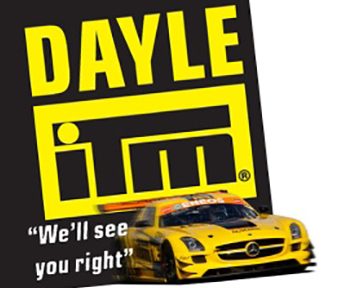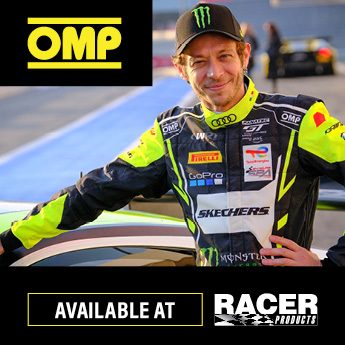New Zealanders often seem to pop up around the global motorsport scene, be it behind the wheel or turning the spanners.
Wind tunnel engineer at AlphaTauri Formula 1 team, Jono Halliday is just one of many Kiwis where the world of motor racing has dictated entire working life.
Since landing a full-time gig in the United Kingdom back in 2006, Halliday has been on the receiving end of several highs and countless lows.
After brief stints working in the Australia and New Zealand Porsche Carrera Cup championships, Halliday landed a senior mechanic role at Carlin Motorsport for the World Series by Renault.
Now firmly on the international stage, Carlin assigned Halliday as the Number 2 mechanic for a young German driver named Sebastian Vettel.
What followed was a string of promotions that had Halliday work alongside future IndyCar stars Mikhail Aleshin and Robert Wickens.
A switch to GP3 newcomers Status GP in 2010 for three seasons then paved the route towards a coveted position in Formula 1. Gaining the necessary skills working with Formula E front runners Alexander Sims and Antonio Felix da Costa, Halliday managed to secure a role as a wind tunnel support engineer for the Toro Rosso F1 team in 2012.

His new role meant his days of constant travel to meet the demands of a punishing GP3 and Formula Renault 3.5 calendar were laid to rest.
But he insists that despite now working out of a wind tunnel factory in the UK, the stakes are as high as ever.
“I was originally considering an F1 race team Job with Renault, and in talks with some V8 Supercar teams,” Halliday told Velocity News.
“But I decided not to pursue either as I was kind of over the racing travelling scene. I was looking for a new challenge.
“So, in 2012 I took on the job role of wind tunnel support engineer, which involves operating the wind tunnel for all the aero testing and development work for every newly designed F1 car for each season.
“Every year a new car is designed and built and tested in the wind tunnel before been made into full size. It is a significant step in determining the success of the car for that year.
“The main factory is based in Faenza, Italy, and the wind tunnel is based in Bicester in the UK. The wind tunnel first started in the late 90s as the tunnel for Reynard, which is where the IndyCar/Champ Cars were designed and tested.
“It was then sold to Stewart Grand Prix, which was eventually bought out by Red Bull Racing, and then became the wind tunnel for Toro Rosso F1.”

Formula 1 is unquestionably the pinnacle of motorsport engineering, boasting the most elaborately designed race cars and feats of technological advancement.
Having a unique insider’s knowledge into the workings of an F1 team, Halliday says the elitist nature of the sport was incredibly staggering when he first started.
“It is mind blowing when you first start off in F1,” he said.
“The budgets for the teams are so much higher than any other series you would have worked in before, and it is crazy how much money does get spent.
“We are working months in advanced in the Wind Tunnel, so time frames are very tight to find the performance.
“You kind of find trends and directions with performance and stick with that. Correlation is a big thing with wind tunnels, as in what you test in the wind tunnel needs to match what happens on track as well. Tunnel testing is split 50/50 with wind on testing the model and CFD designs.
“I got the heads up on the job through another fellow Kiwi, and good friend of mine Chris Seal, who was working for Toro Rosso at the wind tunnel. Chris had just moved back to the UK from a few years working out in Italy with Ferrari F1.
“I went and had a look at the wind tunnel and had some meetings with the tunnel manager and it all sounded very interesting to me. I got offered the job, and the rest is history as they say.”

Halliday still visits New Zealand regularly. His brother, Matt, is an accomplished driver who competed in A1GP for Team NZ and made nine Bathurst 1000 starts.
But he says he won’t consider a return to working in New Zealand, believing what he has achieved over the last 20 years is enough for him to reflect on with immense pride.
“No I probably won’t look to work in New Zealand, and that’s because I’m to a point in my life where I am happy with what I have achieved in Motorsport in the last 20 years.
“I have my own exciting business ventures ahead of me now, with my Helmet painting, printing business and Karting team.
“The UK is my home now, but maybe one day I could retire back to NZ.
“Still, I enjoyed working in NZ. I worked fulltime at International Motorsport for Lyall Williamson, and the time I spent there was probably the most enjoyable in my motorsport career.
“We were running up to 14 Porsche cup cars, NZ V8s and Toyota racing series cars, and even expanding over to Carrera cup Australia.”
2020 will ultimately be the end of Halliday’s nine-year stint in F1 as he moves away from the sport to focus on his replica helmet business.
“My business first started as a hobby as I was collecting a few helmets from drivers I worked with, so got attached to collecting them.
“I specialise in one-off high-end period correct replicas, mainly 70s, 80s, 90s F1. I also manufacture helmet products, stickers, helmet do designs, sometimes dealing with F1 memorabilia and authentic race-used helmets.
“I have also expanded into running a kart team in the UK for some of my business clients and race drivers.
“We have quite a variation of drivers from the UK, USA, Poland, and South Africa. I have big plans ahead, so really looking forward to doing it all full time soon as 2020 will be my last year in F1.”
With the current F1 season now winding to a close, Halliday will still play a vital role over these last few months with the design of AlphaTauri’s 2021 challenger.
The 2021 F1 season is set to kick off with the Australian Grand Prix on March 21.

















